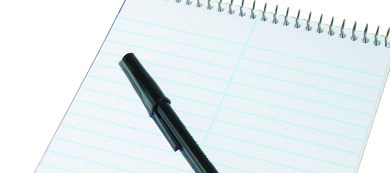Repotting Houseplants
As outdoor plants break dormancy and start to grow in response to the longer days and warmer spring temperatures, houseplants usually put on a spurt of growth as well. Eventually, these indoor plants outgrow their containers and need to be repotted. To check if your plants are becoming root bound and need a larger pot, inspect the root system.
First, knock the plant out of its pot. Watering several hours before this operation will allow the plant to be removed more easily. On pots that are 8 inches in diameter or less, place one hand over the top of the pot with the stem of the plant passing between two fingers, and turn the plant upside down. Then rap the edge of the pot against a table.
The root ball should come away from the pot. On pots that are more than 8 inches in diameter, a bit more encouragement may be needed. Place the pot on its side and rap the top edge of the pot with a rubber mallet. Turn the plant a few degrees, and repeat the procedure until the root ball releases.
Once the plant is free, take a look at the root ball. If you see a clear network of roots, the plant needs to be moved to a larger pot. If the original pot is less than 10 inches, move up an inch in size; if 10 inches or larger, increase the size 2 inches. If the pot has one or several large holes in the bottom for drainage, cover the holes with pot shards (pieces of a broken clay pot) or gravel so that the potting mix is not washed out during watering.
It is essential that the plant sit at the same level it was in the old pot. Add enough potting mix to the bottom of the pot to ensure this. This mix will need to be firmed before the plant is placed on top of it so it doesn’t settle over time.
After the plant is placed, fill in around the original root ball with potting soil. Again, firm this soil with a slender stick, or tap the bottom of the pot on the table. If this firming is not done, new soil will be so light and airy that water will tend to move through it rather than through the whole root ball.
Water the plant thoroughly after repotting, but be especially careful not to overwater for about two weeks. The new soil tends to stay wet until roots penetrate. Overwatering can lead to rot. Most plants need to be repotted annually though vigorous growers may need to move up sooner. Slow-growing plants may stay in the same pot for more than a year.
Source: Ward Upham, K-State University, Horticulture Information Center.
Coming Events:
Pesticide Safety Education Program for Private Applicators
March 14: Farmers and Ranchers College: Keeping Your Farm in the Family for the Next Generation, Evening with Friends, Milligan, 6 p.m.
For further information on these or other topics contact Darci Pesek, UNL Extension Educator for Nuckolls/Thayer counties in Nelson, (402) 225-2381; Hebron, (402) 768-7212 or email to: darci.pesek@unl.edu.


